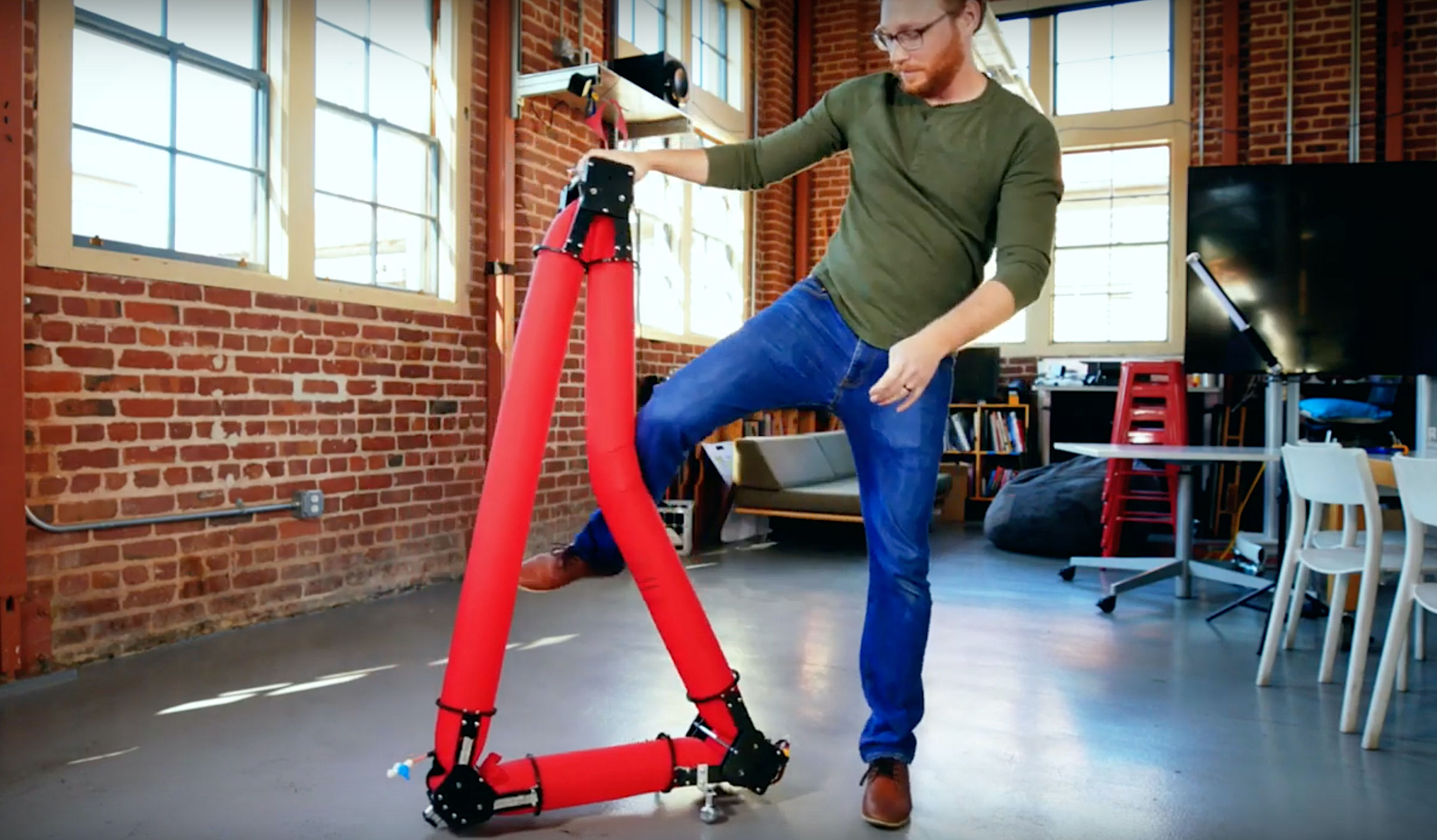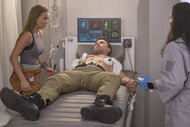Create a free profile to get unlimited access to exclusive videos, sweepstakes, and more!
Baymax on Mars? Shapeshifting ‘soft’ robot could [literally] transform planet exploration

If robotics researchers at Stanford University have their way, not all of our future mechanical sidekicks would have to be so sharp around the edges. A new shapeshifting “soft” robot in development by a team of the school’s engineering students promises a kinder, gentler ‘bot buddy that doesn’t poke back so hard when you bump up against it…and could even help future space missions tread new ground on other planets.
The octahedral robot — cheekily described by grad student Nathan Usevich as “Baymax from the movie Big Hero 6 mixed with Transformers” — uses AI-assigned pneumatic pressure to move air around within its stretchy, flexible tubing. It’s a closed system that keeps air from leaking in or out, so there’s no need for the chunky, heavy mechanical compressors that help power this fella’s more conventional metallic, servo-assisted cousins. Best of all, it’s untethered, meaning it can boldly go wherever its human commander points it — no strings attached.
The stable air pressure principle has led the research team to more formally describe their creation as an “isoperimetric” robot, since “although the shape changes dramatically, the total length of the edges – and the amount of air inside – remains the same,” according to Stanford News. Check out the robot’s transformative capabilities in Stanford’s cool video demonstration below:
Despite the comparisons with Baymax, no one’s gonna confuse this big red robo-roller with anything that resembles its human makers. Thanks to smaller mini-‘bots attached to each arm that work together to constantly change the shape, it can stand more or less upright alongside a person…or turn into a blobby, roly-poly crawler that can even “engulf” objects like the basketball shown in the clip — all the better to carry objects safely across treacherous terrain.The ability to change shape to suit the landscape, in fact, is one of the big applications the team envisions for the robot’s potential future use. “This robot could be really useful for space exploration — especially because it can be transported in a small package and then operates untethered after it inflates,” explains mechanical engineering grad student Zachary Hammond. “On another planet, it could use its shape-changing ability to traverse complicated environments, squeezing through tight spaces and spreading over obstacles.”
Less glamorous, but perhaps more immediate, the team also believes its Baymax impersonator could work well here on terra firma in any situation where humans and robots have to work together closely. As the video shows, people stand a better chance of coming away unscathed if there’s a collision, making the ‘bot well-suited for work environments — including disaster response — where accidentally bumping into a conventional metal robot could hurt someone.
The next step, says the team, is to see how the robot handles water, the better to extend its roaming capabilities to any environment where a human swimmer isn’t optimal. They’re also hoping to play around with other shapes, as well as to come up with “even more new soft robot types, each with their own features and benefits.”














